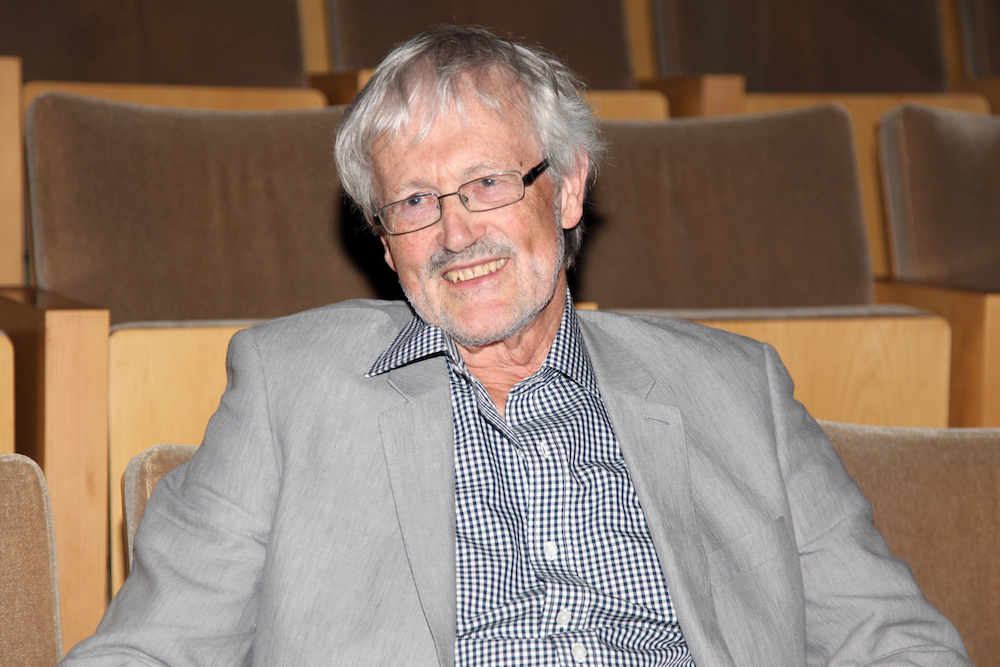
John Harvey is a longtime member of the English faculty at Cambridge University and in 2000 became a university reader in literature and visual culture. He is the author of two books on the color black, Men in Black and The Story of Black, as well as other nonfiction works and novels. Before participating in the Zócalo Getty “Open Art” event “What Does Blackness Mean?,” he talked about the difference between writing scholarly articles and fiction, the music that inspires him to dance, and the very meta way that he makes time pass.
What is the last habit you tried to kick?
That is a really a tricky one. I have not been drinking much for a long time, but I’m trying to cut down to a fraction of a glass. But I still like a fraction of a glass. We spend a lot of time in Greece, so I like drinking retsina or Greek wine. There’s resin in the wine, so there’s a tingle or tang. It works in the way that carbonated drinks do. It makes you feel more refreshed. It works in a hot place, not really in cold ones.
What music do you like to dance to?
Well, I’m not a great dancer, but I sometimes like shaking it up to Greek music. It’s a long time since I did much dancing. My wife is a great dancer.
What in your opinion is the most contradictory set of associations with the color black?
I think the most contradictory set is that it’s the color, on one hand, of black luxuries and prestige, and on the other hand the color of black frighteners. I noticed when we were in Brentwood, there were a lot of big SUVs and Teslas that were black and gleaming. It still has the prestige and worth of things like black velvet and black satin and black marble. But on the other hand, on television and in videos, you can see ISIS or Daesh with executioners in black from head to foot. In history, executioners were often in black and there used to be public executions. It’s meant to frighten and it’s chilling.
How do you procrastinate?
I suppose I reread what I’ve written and read it again. Also I can lose time by taking out my mobile phone and checking again what the time is.
In addition to being a scholar, you also write novels. What’s the biggest difference between those two ways of writing?
I think when you’re writing a novel, in a way, you feel free. You’re not obligated to stick to some historical truth. In some sense, you don’t want to. You can let your imagination work. My last novel was about [the art critic] John Ruskin, who I had worked on in scholarly way. As a scholar, you have to be committed to getting it exactly right, to the details. In the novel, I tried to get into his weird psychology, pathology, sexuality. I had to be free to imagine what was going on. I enjoy speculating.
Where do you go to be alone?
To be quite honest, I don’t go anywhere to be alone. Wherever we are, I have a study where I go to do my thing. But my wife and I go out and take walks and so on. There are nice places in Athens and Cambridge where we can be with other people.
What word or phrase do you use most often?
Actually.
What’s your happiest childhood memory?
I think when my father would explain to me how something worked. I would have a sort of tingling sensation in the brain. I got it because I was interested in what he was saying and also he was saying it in a kindly, helpful way.
What are you keeping in your closet that you should have thrown out already?
Drafts and early versions of things, some of which got published and some of which never did. Probably old drawings—I used to draw.



